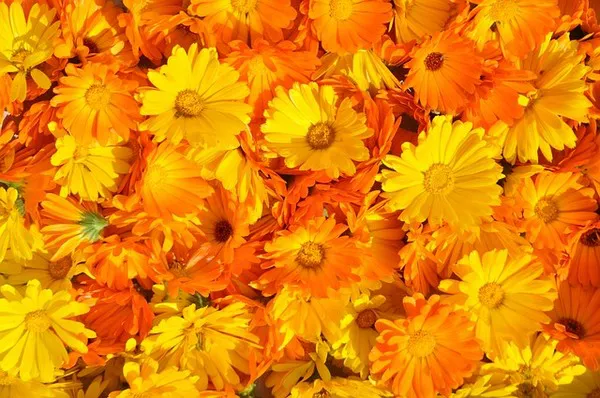Marigolds, with their vibrant hues and captivating fragrance, have long been cherished in gardens for their beauty and versatility. While many gardeners opt for the convenience of purchasing young marigold plants, there is a rewarding alternative – growing marigolds from dried flowers. This method not only adds a personal touch to your gardening experience but also allows you to witness the entire lifecycle of these resilient flowers. In this comprehensive guide, we’ll explore the step-by-step process of growing marigolds from dried flowers, ensuring a successful and fulfilling gardening endeavor.
Step 1: Selecting the Right Marigold Variety:
Before embarking on your marigold-growing journey, it’s essential to choose the right variety for your garden. Marigolds come in various types, including French marigolds (Tagetes patula), African marigolds (Tagetes erecta), and signet marigolds (Tagetes tenuifolia). Each type has unique characteristics, such as size, color, and growth habit. Consider your garden’s aesthetic and environmental conditions when selecting the marigold variety that suits your preferences.
Step 2: Procuring Dried Marigold Flowers:
To grow marigolds from dried flowers, the first step is to obtain high-quality dried marigold flower heads. You can either collect them from existing marigold plants or purchase them from reputable nurseries or online suppliers. Ensure that the flowers are fully dried, free from mold or pests, and represent the variety you wish to cultivate. Healthy, mature flowers are more likely to produce viable seeds, increasing your chances of success.
Step 3: Extracting Marigold Seeds:
Once you have the dried marigold flowers, extracting the seeds is the next crucial step. Gently rub the dried flower heads between your fingers over a clean surface to release the seeds. Marigold seeds are relatively large and easy to handle. Separate the seeds from the chaff and discard any damaged or discolored seeds. Proper extraction ensures that you start with a batch of robust seeds ready for germination.
Step 4: Germinating Marigold Seeds:
To kickstart the germination process, sow the marigold seeds indoors, ideally six to eight weeks before the last expected frost in your region. Use a high-quality seed starting mix and plant the seeds about 1/4 inch deep. Water the soil lightly and cover the containers with plastic wrap or a humidity dome to create a greenhouse effect. Place the containers in a warm location with ample sunlight.
Step 5: Transplanting Seedlings:
Once the marigold seedlings have developed true leaves and are robust enough to withstand outdoor conditions, it’s time to transplant them into your garden or larger containers. Choose a location with well-draining soil and ensure that the plants receive at least six hours of sunlight per day. Space the seedlings according to the specific requirements of your chosen marigold variety, typically 6 to 18 inches apart.
Step 6: Providing Adequate Care:
Successful marigold cultivation relies on providing proper care throughout the growing season. Water the plants consistently, keeping the soil evenly moist but not waterlogged. Applying a balanced fertilizer every 4-6 weeks promotes healthy growth and vibrant blooms. Mulching around the plants helps retain soil moisture and suppresses weeds.
Step 7: Managing Pests and Diseases:
While marigolds are relatively resistant to pests and diseases, vigilance is key to maintaining a thriving garden. Keep an eye out for common pests such as aphids and spider mites. If necessary, use natural remedies like neem oil or insecticidal soap to manage infestations. Additionally, proper spacing and good air circulation help prevent fungal diseases.
Step 8: Deadheading for Prolonged Blooms:
To encourage continuous blooming, regularly deadhead spent flowers by pinching or cutting them off at the base. Deadheading prevents the plant from channeling energy into seed production, redirecting it instead towards new growth and blossoms. This simple practice ensures a prolonged display of marigold blooms throughout the growing season.
See Also: How To Grow Plants From Cuttings?A Comprehensive Guide
Conclusion:
Growing marigolds from dried flowers is a rewarding and cost-effective way to add a burst of color to your garden. From selecting the right marigold variety to nurturing the seeds into flourishing plants, each step contributes to a fulfilling gardening experience. By following this comprehensive guide, you can cultivate marigolds that not only showcase their vibrant beauty but also carry the satisfaction of having grown them from dried flowers with your own hands. Embrace the journey, and soon your garden will be adorned with the radiant glow of these timeless blooms.


